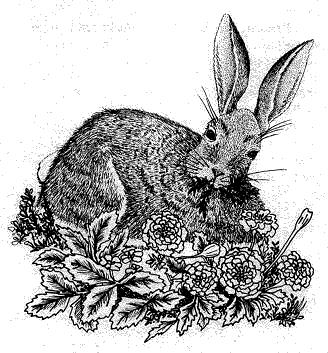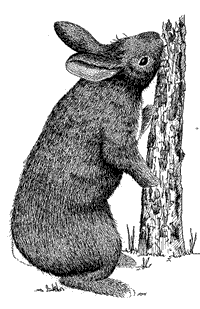 |
Ever since they were introduced into the United States from Europe, rabbits have shown themselves to be extremely adaptable to human environments. Although they are valued as a source of meat and fur, as well as pets, they are also regarded by gardeners and homeowners as pests. In regions where there are no natural predators to control their numbers, cottontails are responsible for the destruction of acres of food crops. They are also carriers of diseases, most notably tularemia.
What Rabbits Looks Like
 |
Cottontails are social animals, usually living in groups which include 2 or 3 males and 3 or 4 females. They establish distinct territories where they raise their families in shallow nests in weedy undergrowth, brush piles, tall grass, or among tree roots. They seldom venture much farther than 1,500 feet from home. Prolific breeders, rabbit pairs produce litters monthly from late winter through June. Each litter has from 3 to 8 babies, called kittens, which are born blind and furless but become independent in about 30 days. About 90 percent of the kits die during their first year.
Rabbits are nocturnal, being most active from dusk until midmorning. They spend the warmer part of the day in a shaded area, hiding from their many natural enemies under thick shrubs or beneath garden sheds. Various predator enemies are members of the weasel family, rats, badgers, foxes, owls, buzzards, ravens, crows, black-backed gulls and hawks. Domesticated dogs and cats are major predators in suburban areas.

